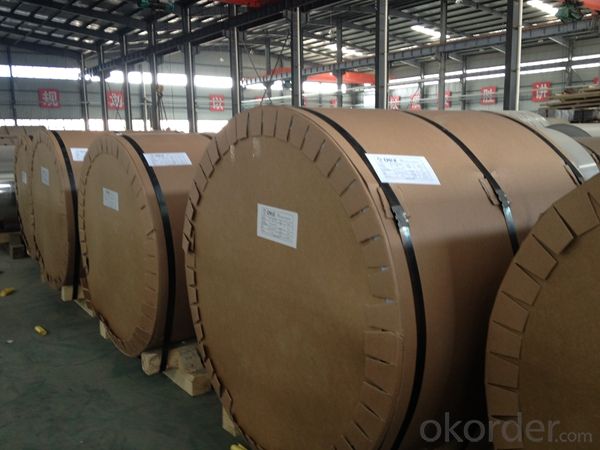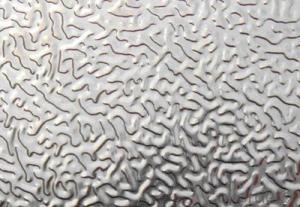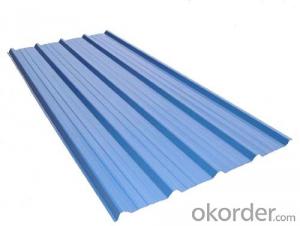Corrugated Aluminum Roofing Sheets - Standard Aluminum Rolls for Wall System Thickness
- Loading Port:
- Shanghai
- Payment Terms:
- TT OR LC
- Min Order Qty:
- 5 m.t.
- Supply Capability:
- 100000 m.t./month
OKorder Service Pledge
OKorder Financial Service
You Might Also Like
Specification
1.Structure of Standard Aluminum Rolls Thickness for Wall System
Aluminum Sheets are strengthened and cut from raw materials with different alloys, such as AA5005, AA5052, etc. They are easy for processing in different shapes, good in intensity and can be quickly installed. Aluminium Sheets for Energy Saving Curtain Walls are good in energy saving, weather resistance, fire resistance, easy for maintenance and with many colors.
Aluminium Sheets for Energy Saving Curtain Walls are widely used in construction of metal walls, metal ceilings, car decoration, advertizing panels, etc.
2.Main Features of Standard Aluminum Rolls Thickness for Wall System
•High intensity
•Easy to be processed and shaped
•Weather resistance
•Anti-pollution & environment protection
3. Standard Aluminum Rolls Thickness for Wall System Images



4.Specification of Standard Aluminum Rolls Thickness for Wall System
Alloy Number | AA5XXX |
Temper | H12, H14, H16, H18, H22, H24, H26, H32, HO, F |
Thickness | 0.1mm – 500mm |
Width | 10mm- 2200mm |
Standard | GB/T3880-2006, ASTM, ISO, EU standard |
5.FAQ
A.What about inspections to guarantee quality?
For each order for Aluminum Sheets with Mill Finished Surface AA5XXX, we will arrange strict inspection for raw materials, inspection during production and inspection for finished goods.
With requirement of customers, we also can arrange the third party inspection.
B.What about delivery?
We will put order for Aluminum Sheets with Mill Finished Surface AA5XXX in production schedule after order gets confirmed against copy of TT or L/C. Normally it takes about one month for production. Exact shipment schedule is different based on different sizes and quantity.
C.What is the MOQ?
5 tons for each size.
D. Where have you exported aluminium sheets?
We have exported aluminum sheets to many countries. Main markets include South East Asia, Middle East, North America, South America, etc.
- Q: How do you prevent warping of aluminum sheets during bending?
- One way to prevent warping of aluminum sheets during bending is by using proper techniques and tools. This includes using the correct bending radius, ensuring even distribution of pressure along the sheet, and employing a suitable clamping method to hold the sheet in place during the bending process. Additionally, preheating the aluminum sheet can help to reduce the likelihood of warping.
- Q: What are the different forming techniques for aluminum sheets?
- There are several different forming techniques that can be used to shape aluminum sheets. One common technique is called bending, which involves applying force to the sheet to bend it into a desired shape. This can be done manually using a press brake or through automated processes such as roll forming or stretch forming. Another technique is called deep drawing, which involves using a die and punch to stretch the aluminum sheet into a three-dimensional shape. This process is commonly used to create cylindrical or box-shaped components like cans or containers. Hydroforming is another forming technique that can be used for aluminum sheets. It involves using hydraulic pressure to shape the sheet against a mold or form. This technique is often used to create complex, irregular shapes that would be difficult to achieve with other methods. Spinning is a technique that is commonly used to create symmetrical shapes such as bowls or cones. It involves rotating the aluminum sheet against a mandrel while applying pressure to shape it into the desired form. Finally, there is also a technique called stamping, which involves pressing the aluminum sheet against a die to create a specific shape. This technique is often used for high-volume production of components such as automotive body panels. Overall, these forming techniques offer a range of options for shaping aluminum sheets into various forms and designs, allowing for flexibility and versatility in manufacturing processes.
- Q: Are aluminum sheets suitable for decorative lighting fixtures?
- Aluminum sheets are indeed a fantastic option for embellishing lighting fixtures. This material, known for its lightweight and versatility, can be effortlessly fashioned into diverse shapes and designs. Moreover, aluminum boasts exceptional resistance against corrosion, rendering it fitting for both indoor and outdoor lighting fixtures. Furthermore, aluminum can be conveniently coated or painted to achieve diverse finishes, offering limitless design prospects. Additionally, its reflective qualities enhance the overall lighting effect, making it an ideal preference for decorative lighting fixtures.
- Q: Can aluminum sheets be used for boat building?
- Yes, aluminum sheets can be used for boat building. Aluminum is a popular material choice due to its strength, durability, and resistance to corrosion. It is lightweight and easy to work with, making it suitable for constructing various types of boats. Additionally, aluminum boats are known for their longevity and low maintenance requirements.
- Q: Aluminum plate thickness 3 mm, what is the allowable error in the national standard thickness?
- The allowable deviation of plate thickness in GB/T3880.3-2006 "general industrial aluminum plate, strip and Aluminum Alloy third part:" size deviation provisions, I have the standard download URL sent to you a message, please check.The deviation is divided into ordinary and high level, +0.10, -0.12
- Q: Can aluminum sheets be bent or formed into different shapes?
- Yes, aluminum sheets can be bent or formed into different shapes. Aluminum is a highly malleable metal, which means it can be easily shaped or formed without breaking or cracking. This property makes it highly versatile for various industries and applications. Aluminum sheets can be bent, rolled, or pressed to create different shapes or forms, such as cylinders, cones, or complex geometric structures. The ability to bend or form aluminum sheets opens up a wide range of possibilities for manufacturing, construction, automotive, aerospace, and many other industries.
- Q: which is the best bonding method for aluminum sheet and plastic?
- smear glue, there is a glue special for the bonding of plastic and steel materials.
- Q: (given the fact that specific gravity of aluminum is 2.7)1. What is its volume?2. The ingot is suspended from a rope and totally immersed in water. What is the tension in the rope (the apparent weight of the ingot in water)?
- first find the volume of your aluminium. youll need this when analyzing the bouant force F(b). the sg of aluminum is 2.7 and the density of water is 1000 kg/m^3 so the density of aluminum is 2.7x1000=2700kg/m^3. the mass is 71N/g = 7.237512742 kg. so volume of our piece of aluminum = mass/density = 0.0026805603 m^3 now analyze the forces being applied to the system. There are three, the force of gravity F(g), the buoyant force F(b) and the tension T. Tension and buoyant force push up, gravity pulls down. the system will be at rest since the rope is holding it at rest. so T + F(b) - F(g) = 0 T + (Volume aluminum X density water X g) - (MAss of aluminum x g) = 0 T + (0.0026805603x1000x9.81) - (71 N (given in problem)) = 0 Solving for T, T = 44.70370346 N = 45 N using sig figs.
- Q: Are the aluminum sheets suitable for manufacturing architectural column covers?
- Yes, aluminum sheets are suitable for manufacturing architectural column covers. Aluminum is a lightweight yet durable material that offers excellent corrosion resistance, making it ideal for exterior applications such as column covers. It can be easily shaped, bent, and fabricated to create custom designs and sizes, allowing for versatility in architectural projects. Additionally, aluminum sheets can be finished with various coatings, such as powder coating or anodizing, to enhance their aesthetic appeal and provide additional protection against weathering and wear. Overall, aluminum sheets provide a great combination of strength, versatility, and aesthetics, making them a suitable choice for manufacturing architectural column covers.
- Q: How do aluminum sheets compare to copper sheets in terms of conductivity?
- When it comes to conductivity, aluminum sheets and copper sheets have their differences. Copper is known for its exceptional ability to conduct electricity and is considered one of the most conductive metals available. Its high electrical conductivity allows electricity to flow through it with minimal resistance. On the other hand, aluminum, while still a good conductor of electricity, is not as conductive as copper. In fact, aluminum has about 61% of the conductivity that copper possesses. As a result, if high conductivity is a top priority, copper sheets would be the preferred option. However, if cost-effectiveness and lightweight properties are more important, aluminum sheets can still offer adequate conductivity for many applications. Ultimately, the decision between aluminum and copper sheets relies on the specific project requirements and the balance between conductivity, cost, and other factors.
Send your message to us
Corrugated Aluminum Roofing Sheets - Standard Aluminum Rolls for Wall System Thickness
- Loading Port:
- Shanghai
- Payment Terms:
- TT OR LC
- Min Order Qty:
- 5 m.t.
- Supply Capability:
- 100000 m.t./month
OKorder Service Pledge
OKorder Financial Service
Similar products
Hot products
Hot Searches
Related keywords


























